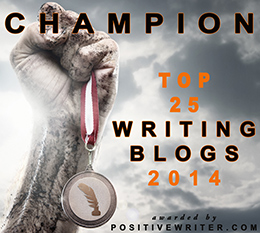Hi, friends! Ashley here. So, a couple years ago now, I got this crazy nudge to try writing my WIP at the time from two different points in history— modern, and Preservation Era Charleston. Now, let me just say, I never in a million years planned to write split-time novels. I just felt like two time periods were the only way to do justice to the story. So I gave it a shot, and low and behold, I found a whole new dynamic in my writing. I STINKING LOVE writing time-slip. So while I’m by no means an expert, today I thought I’d chat with you about a few key things I’ve noticed in successful time-slip stories.
Ever since split-time sort of took off as a trend in CBA, I’ve seen sooooo many people describe their WIP that way. And can I be honest? I love this structure so much that it makes me a little nervous some people are hoping to cash in on it as a trend versus as a framework that really suits their writing style. Meanwhile, others may be sitting back, a little nervous about the idea of writing a storyline outside their comfort zone (whether you’re typical a historical writer or a contemporary one). I know I was in the latter position for a while. What if I couldn’t find my voice in both time periods?
So, how do you know if your story may be suited for time-slip?
Here are a few questions to ask.
1) Does the plot contain complex secrets that span decades? If so, your story maybe suited for time-slip. The structure tends to work very, very well when a big event or secret in the past can become a catalyst for the modern storyline. Think
The Butterfly and The Violin, for example. If the story itself doesn’t organically span those periods of time, you may not need the secondary time period.
2) Does the story NEED two time periods to be told well? Think
This Is Us— but try to do it without crying 😂 — for the story to be effective, we must see the then-and-now growth of the characters. If the story was completely set when the family on the show is still young, think of all we would miss. If, on the other hand, the bulk of your story all happens in one time period, then split-time may not be for you. Write the story when and where the STORY needs to happen, rather than worrying over forcing it into a particular framework.
3) Do my characters in the two periods learn something from each other? The beauty of split-time novels is the coming-together-ness of persons across time (and perhaps even across cultures). Readers crave growth in your modern characters— ideally, a growth that comes from the lessons of the past. And isn’t it beautiful when a past we thought gone rises up to tell its story? Can you tell how much I love this? 😂 There’s something so redemptive at stake in the process.
4) Is my portrayal of one time period stronger than the other? On the one hand, the obvious answer is WELL YEAH because we all have a natural bend and passion that comes through in our writing voice. But if your critique partners/reader friends/gut instincts are all telling you that one portion of the story is by far stronger, consider whether or not that’s where the REAL story is happening, and whether you should stick to that timeframe. Do consider that it’s important to hear from other people... I was absolutely convinced my historical threads were lacking because I’m such a fish out of water when it comes to historical, but to my shock, everyone who’s read my WIP has told me the historical part was their favorite! So, an insecurity on your part does not necessarily equal an inadequacy.
I hope these questions help you work through whether split-time is write for your novel! It’s such a really cool structure to read and to write when used effectively, and I hope to see a lot more of it in CBA. If you’ve never read split-time before, I’d recommend you start with Kristy Cambron, Rachel Hauck, Susan Meissner, and Heidi Chiavaroli — all of whom are amazing.
Tell me in the comments— what are some of your favorite split time novels?

Ashley Clark writes romance with southern grace. She's dreamed of being a writer ever since the thumbprint-cookie-days of library story hour. Ashley has an M.A. in English and enjoys teaching literature courses at her local university. She's an active member of ACFW and runs their newcomer's loop. When she's not writing, Ashley's usually busy rescuing stray animals and finding charming new towns. You can find Ashley on her personal blog, Facebook, Pinterest, and Twitter. She is represented by Karen Solem.

























